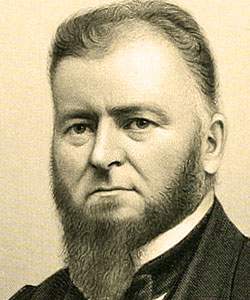Louis Malesherbes Goldsborough (American National Biography)
Scholarship
Until late in the war Goldsborough performed administrative duties in Washington but without being allowed any role in major decision making. [Navy Secretary Gideon] Welles had a poor opinion of Goldsborough, regarding him as "inefficient" with "no hard courage." Repeated requests for active command were denied Goldsborough on the basis that he could not be spared from his administrative duties. Finally, however, in February 1865, Goldsborough was placed in command of the European Squadron and ordered to locate and destroy any remaining Confederate raiders at sea or seize them if in port. The small squadron was not ready to sail until June, arriving in European waters long after the war had ended. The last Confederate raider at sea--CSS Shenandoah--managed to elude all pursuers and reached England in September. Thus Goldsborough was unable to redeem his reputation as he had hoped by performing a significant action. For the next two years he continued to command the European Squadron.
Norman C. Delaney, "Goldsborough, Louis Malesherbes," American National Biography Online, February 2000, http://www.anb.org/articles/04/04-00421.html.





